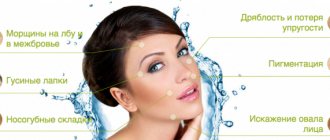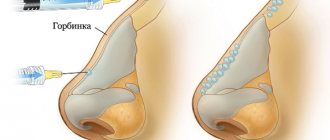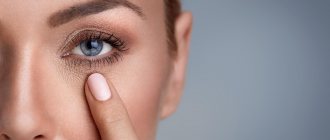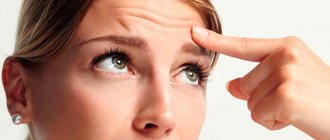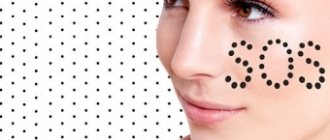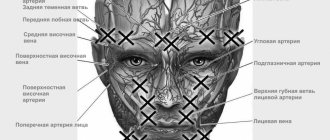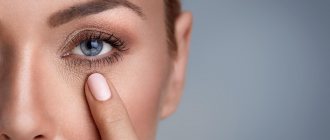With age, the skin ages and loses its elasticity, so swelling, wrinkles and other age-related changes often form under the eyes. By and large, this occurs due to the retraction of the skin in the eye area. get rid of bags under the eyes with the help of minor plastic surgery.
What is a check face lift?
Facial plastic surgery can be performed using a variety of methods, including surgical intervention or non-surgical correction. Few people know the Cheek-lift operation, since the technique was developed not so long ago.
Check-lifting is a complex procedure for lifting the midface area, performed using an endoscope. The complex includes plastic surgeries such as blepharoplasty of the lower eyelids (canthopexy is possible) and zygomatic lift.
The operation is carried out using an innovative method. As a result of plastic surgery, the surgeon tightens the skin without performing serious traumatic manipulations, eliminating the consequences of age-related changes. Reviews about check-lifting confirm that plastic surgery is effective specifically for rejuvenation purposes.
A distinctive feature of this plastic surgery method is the use of an endoscopic apparatus. Performing an operation using an endoscope allows you to reduce the risk of complications to exceptional levels, achieve an ideal result and avoid serious trauma to the correction area.
Causes of bags under the eyes
The soft tissues of the face consist of muscles and a fat layer (it is this that gives a child’s and youth’s face a pleasant roundness). Over time, as a result of gravity, so-called ptosis occurs - the tissues slide down and sag. Fatty hernias form in the lower eyelid area, and so-called lip bags form closer to the cheekbones.
Quite often, these manifestations are encountered by people with chronic health problems - for example, kidney disease. In this case, the face may look swollen, puffy, and the intervention of a cosmetologist will not completely solve the problem - the condition needs to be corrected according to the underlying disease.
When is check lifting effective?
Age-related changes can have a different nature, as well as varying degrees of severity. Typically, plastic surgeons evaluate existing defects and recommend the most appropriate way to eliminate them.
Check-lifting is used to correct signs of “old age” between the ages of 35 and 50 years. If the skin is severely weakened (flabbiness), plastic surgery may not give the desired result, or the effect will not last long.
The Correct Clinic offers plastic surgery “check-lifting” in the middle zone of the face for the following indications:
- drooping corners of the eyebrows, lips or cheeks;
- formation of “bags” under the eyes;
- severe sagging skin;
- deepening of nasolabial folds;
- eversion of the eyelid (lower).
During the operation, tension occurs not only in the skin, but also in the muscle tissue. The surgeon can also perform correction manipulations in the eye area (changing the incision, raising the corners of the eyes, etc.).
Are there any contraindications
Any operation has limitations regarding the patient's health condition. Check-lifting also has contraindications, in which it is necessary to choose another method of plastic surgery, or refuse surgical correction, preferring non-surgical methods.
Contraindications for check-lifting:
- chronic increased arterial and intraocular pressure;
- blood diseases, including poor clotting;
- cardiovascular diseases;
- malignant oncology;
- exacerbation of viral or infectious pathologies;
- diseases of the endocrine system;
- dermatological diseases or formations on the skin.
Plastic surgery is not performed on women during pregnancy and breastfeeding. Plastic surgeons do not recommend resorting to this method of plastic surgery before the age of 30 years.
Causes
As a rule, a more or less complex combination of factors leads to the formation of an eyelid hernia, among which both endogenous (internal) prerequisites and exogenous (external) influences or conditions are found. The most common reasons are:
- genetic predisposition;
- disturbances in the circulation of lymph, blood and intraocular fluid;
- atrophic thinning of the skin of the eyelids;
- unhealthy lifestyle (primarily situations of chronic stress and lack of sleep);
- hormonal fluctuations and changes;
- chronic overload of the visual system;
- special structure of the orbital bones.
Preparation
Before undergoing plastic surgery, the patient must undergo a consultation with a surgeon, diagnostics and a preparatory stage. You can make an initial appointment at the Correct Clinic directly on the center’s website, or by calling the contact number.
Based on the results of the consultation, the doctor will determine the admissibility and necessity of correction using the “check-lifting” method. The next step is to undergo diagnostics. In the absence of contraindications, which is confirmed by examination, surgery is prescribed and recommendations are given on preparation for it.
The peculiarity of check-lifting is that the set of plastic techniques is selected individually. It is during the consultation that the surgeon determines what correction methods can be applied to eliminate the signs of aging.
Types of operations
Various operating techniques exist and are practiced, but today two approaches can be considered standard:
- excision of excess dermal and lipid tissue with a scalpel; Despite the somewhat frightening sound of the procedure, in fact the operation is low-traumatic and does not lead to significant scarring or the need for long-term rehabilitation: natural regenerative processes heal the surgical field quickly and do not leave noticeable scars;
- surgical access in the form of a puncture through the conjunctiva; This technique leaves no traces at all and is practically not felt by the patient.
Thus, a short, minimally invasive plastic surgery can eliminate a cosmetic defect for many years. The risk of postoperative complications or side effects tends to zero, however, to eliminate them, the following mandatory instructions must be observed:
- do not try to get rid of the postoperative patch on your own initiative (for example, with the motivation “everything has healed for a long time and I really want to see it quickly”);
- apply (as often and for a long time as the doctor prescribes) cold compresses to prevent possible pain or discomfort in the postoperative period, as well as to relieve swelling and puffiness;
- limit any physical activity, avoid body positions in which the head is tilted forward;
- follow all other individual recommendations if they are given by the doctor (for example, re-examination after a certain time or taking anti-inflammatory or bactericidal drugs).
How is plastic surgery performed?
Check-lifting is performed mainly using general anesthesia, but for minor manipulations local anesthesia can also be used.
The operation is carried out by inserting an endoscope under the tissue. There are two ways to gain access to the plastic surgery area: through the lower eyelid or temple.
Classic operation scheme:
- installation of contact lenses to protect eyes;
- making an incision and inserting an endoscope;
- “leveling” sections of folds;
- tightening of tissues and attaching them to the outer corner of the eye;
- suturing.
The duration of such a procedure does not exceed 2 hours, even if it is a complicated operation. If it is necessary to use other plastic methods (for example, blepharoplasty), the operation is performed in accordance with their characteristics.
Types of check-lifting
When performing a check-lift, a qualified and experienced plastic surgeon assesses the general condition of all changes in facial tissue. The individual approach of our specialists allows us to achieve impeccable results.
There are three types of check-lifting according to the complexity of the operation:
- I complexity - includes plastic surgery of the paint bags and nasolacrimal groove;
- Complexity II - includes correction of the nasolacrimal groove, the area of the paint bags and nasolabial folds;
- Stage III - involves a full range of possible corrections, or repeated plastic surgery.
Before the operation begins, the surgeon must discuss with the patient all upcoming procedures, determine the correction zones and the methods by which the plastic surgery will be performed.
Painting bags. What to do?
Anton Zakharov: Young people already have pronounced paint bags. What are they going to train there?
There are a lot of conservative methods, they do not combat the cause in any way.
Hello! My name is Zakharov Anton Igorevich. I am a plastic surgeon. Today I will tell you about such a problem as painting bags.
It's no secret that this aesthetic imperfection quite often brings discomfort to our patients and others, and the market offers a very large number of methods for solving this problem.
But first, in order to understand what it is, it would be correct to understand the anatomy of the face and clarify the genesis of these anatomical formations.
The fact is that in the middle third of the face there are two main ligaments - this is the orbital-malar ligament, which begins in the corner, in the area of the nasolacrimal groove, and is the top of the macular sac, and the zygomaticocutaneous ligament is a ligament that limits the macular sac in the lower part . And thus, between these two ligaments, the fat packet is blocked, in which tissue fluid often stagnates. This is exactly what we see when this anatomical formation protrudes above the surface of the face.
Let's take a closer look at why paint bags appear so often and bother us, and what this may be connected with.
Today in society there are a lot of myths that a person has problems with the kidneys, heart or water metabolism. And these illusions, of course, force people to run to related specialists in an attempt to determine the source of such imperfection.
In fact, you need to understand that the presence of paint bags is a consequence of the individual anatomical structure of this zone - the middle third of the face.
You have probably noticed that in some situations young people already have pronounced paint bags, and, on the other hand, adults and older people do not have paint bags. This is due, first of all, to the density, the individual density of the ligamentous apparatus in the middle third of the face, which is genetically heterogeneous. And it is the density of these ligaments that determines how much fluid is retained in this fat packet. You need to understand that this is genetics. And, first of all, this is due to our code, which our parents passed on to us.
What does the market offer us to combat this situation? First of all, people’s lack of understanding of the reasons for the formation of paint bags pushes them to look for a solution, most often to a cosmetologist. What does the cosmetologist offer them? Camouflage of this area with hyaluronic acid is often used. This technique involves leveling the relief of surrounding tissues to the level of the paint bags. In principle, in some cases, when the painters are extremely weakly expressed, this can give some short-term effect.
The downside is that it significantly weighs down the face and this area, including due to the attraction of water by hyaluronic acid, which is most often used as a filler in this case. Therefore, such superficial camouflage does not solve the main problem, but increases the volume of the cheekbones and makes the face appear heavier.
Regarding fillers, there will be a detailed program dedicated to this particular technology. I think we will already consider this aspect and related ones in much more depth.
It is also often suggested to use lifting threads in order to make this area more taut, moving the fabric towards the temple, and thereby eliminating the relief of the paint bag. I would like to say that this tactic is not very correct, because it does not solve the root cause of the problem and most often leads to the movement of these unaesthetic formations towards the temple without changing the texture and shape.
The next technology that is often used is the administration of hormonal drugs, i.e. corticosteroids directly into the fat pad. This technique involves an attempt to reduce its volume. But we must understand that this method is completely uncontrolled. It often leads to pronounced recesses, pits and shape defects. At the same time, the entire ligamentous apparatus that forms the paint sac remains in place, and often the effect of the so-called empty sac is formed - when the fat sac begins to dissolve under the influence of corticosteroids, but the rigid ligaments retain the relief in this area, and it is much less aesthetic than native ones changes that were there initially.
It is important to understand that aggressive injection of corticosteroids into the paint bag in order to reduce its volume and level the condition of this surface is not a very controlled tactic. Corticosteroids, entering this anatomical zone, affect all anatomical structures, including adjacent ones. Therefore you feel atrophic, i.e. deficient in volume, the results obtained with a similar method. They are uncontrollable and go beyond the boundaries of the painting bag, which this introduction was originally intended to combat.
There are also more aggressive methods of combating paint bags, such as the introduction of lipolytics. It must be said that the safety of this correction method has never been proven. And the aggressive introduction of lipolytic drugs into the fatty tissue in the middle third of the face is very often uncontrolled and leads to quite serious shape defects and aesthetic defects in the future. Such defects are difficult to eliminate even with full-fledged surgical methods.
Modern cosmetology also suggests using ultrasonic lifting to solve this problem. This is a modern and fairly high-tech hardware method that allows you to somewhat reduce the amount of fatty tissue in this area. But you need to understand that the technique has its limitations, and this only helps with very weakly expressed paint bags. And the basis of effectiveness in this case is that the entire ligamentous apparatus of the middle third of the face forms this bag, and it remains intact in its place.
Dear friends, let's summarize. There are a lot of conservative methods that try to solve this problem, but they are all united by one common problem - they do not fight the cause in any way, i.e. with a ligamentous apparatus that blocks tissue fluid in this package. They are all an attempt to eliminate the investigation. But still, for effective correction, we need methods that will combat the root cause.
Let's take a closer look at these methods.
This is a group of operations that implies total destruction of all ligamentous groups that form this anatomical formation in all layers, moving these layers to another position that is more correct and more aesthetic, and fixing the tissue in a new position.
It is important to note that when performing these operations, the ligaments destroyed in different layers in the new position do not coincide with their original projection; accordingly, restoring them perpendicular to the skin in order to form such a rigid constriction blocking the paint bag is no longer possible. This is the task of various complex interventions in the middle third of the face aimed at combating painters.
It is important to note that it is this approach and only it that allows you to fight the root cause of the appearance of paint bags and eliminate them completely forever, but with rare exceptions when the scarring process somehow forms planar scars that block the paint bag. But these are rare cases, and we must understand that this is about 2% of the statistics.
Result of plastic surgery
The use of an endoscope for surgery can reduce the rehabilitation period. Recovery takes no more than 3–4 weeks. Despite the fact that the endoscopic method is low-traumatic, after plastic surgery the patient may experience hematomas and swelling, but they resolve on their own before the completion of the rehabilitation period.
As a result of “Check-lifting” plastic surgery, the following effects can be achieved:
- elimination of age and facial wrinkles;
- restoration of firmness and elasticity of the skin;
- reducing the severity of the tear duct;
- highlight cheekbones;
- “raise” the corners of the eyes and lips;
- return the shape to the cheeks;
- get rid of “bags” under the eyes.
The overall effect of the correction allows you to “reset” up to 10 years. The results can last up to 5 years or more. During this period, age-related changes will appear much more slowly.
Laser blepharoplasty
The main questions that the patient poses to the surgeon:
How to remove bags under the eyes? How to remove puffiness under the eyes? How to remove wrinkles under the eyes? How to lift drooping eyelids? How to remove drooping eyelids? How to remove circles under the eyes?
Laser blepharoplasty is a new stage in the development of plastic surgery. Thanks to the use of laser, eyelid surgery has become safer (the thickness of penetration is measured in microns, and the operation of the laser is controlled by a computer), the risk of infectious diseases has decreased (since the device itself does not come into contact with the cut surface), the impact occurs on certain points, lasts a fraction of a second, without affecting the surrounding tissue, which reduces the recovery period after surgery and helps to achieve a better aesthetic effect as a result of the procedure. Therefore, laser blepharoplasty is the most effective and safe type of eyelid surgery and is widely used in medical centers around the world.
Types of laser blepharoplasty
Laser blepharoplasty of the upper eyelids. The operation allows you to eliminate the “overhanging eyelid”. The surgical approach is an incision along the natural fold of the eyelid, which means that after healing the postoperative scar will be invisible. During the operation, excess skin and fatty tissue are removed. This operation is performed without the use of a scalpel or other sharp instruments.
Blepharoplasty of the lower eyelids helps eliminate bags under the eyes, wrinkles under the eyes, swelling under the eyes, and reduce “circles under the eyes.”
Circular blepharoplasty is simultaneous plastic surgery of the upper and lower eyelids.
Indications for blepharoplasty and patient age
Indications for plastic surgery may vary. This includes correction of sagging and ptosis (drooping) of the upper eyelids, which limit the field of vision. And elimination of age-related changes in the area of the upper and lower eyelids. Aesthetic correction of the shape and shape of the eyes. Elimination of facial asymmetry.
Today, laser blepharoplasty is performed by people of different ages from 20 to 70 years. The majority of applicants are people over 35 years of age. But plastic eyelid correction can also be prescribed to younger patients with a predisposition to eyelid deformation, “fatty hernias.”
Contraindications to laser blepharoplasty
- Diseases of internal organs and systems in the acute stage.
- Infectious diseases.
- Blepharitis and conjunctivitis
- Glaucoma
Patients with increased intraocular pressure and thyroid diseases should undergo additional consultations with an ophthalmologist and endocrinologist, respectively, before surgery.
How is laser blepharoplasty performed?
Surgery on the upper and lower eyelids (blepharoplasty) is performed using a CO2 laser. This laser is commonly called a “hot” laser. One of its distinctive characteristics is the coagulation of blood vessels simultaneously with the incision. This means that a cut made with such a laser will be absolutely bloodless.
This completely eliminates the risk of infection and reduces the likelihood of postoperative hematomas and swelling. Therefore, laser blepharoplasty is easily tolerated. Patients recover somewhat faster than after traditional surgery, when excess skin and wrinkles under the eyes are removed using a scalpel.
Surgery and postoperative period for laser blepharoplasty
Eyelid surgery is performed on an outpatient basis. Before the operation, future incisions are marked. The operation is performed under local anesthesia with the modern drug naropin. Additionally, if necessary, during the operation, eyelid skin rejuvenation procedures can be performed using laser fractional rejuvenation. The entire procedure may take 1-3 hours.
In the postoperative period, moderate discomfort may be experienced in the form of heaviness, discomfort on the eyelids, and mild eye irritation. External manifestations may be: small skin bruises (typical for patients who smoke), cyanosis, swelling of the eyelids. The patient is advised to avoid heavy physical activity during this period. The recovery period after surgery lasts 7-10 days. At this time, it is not recommended to apply makeup to the eyelids or use contact lenses. Before removing the sutures, when washing your face, do not touch the area around the eyes. For 5 days after surgery, your doctor will prescribe you special antibacterial eye drops to prevent infection. Postoperative sutures are removed by the surgeon on the 5th day. Thin scars at the incision sites can take up to 6 weeks to resolve.
To shorten the recovery period, you can undergo a special set of physical procedures.
Possible complications of laser blepharoplasty
Typically, laser blepharoplasty is performed without complications and the patient is satisfied with the result. But any eyelid surgery is accompanied by a certain risk of complications, such as bleeding, infection, inflammation, and impaired tissue regeneration. Drooping, eversion of the eyelid and impaired secretion of tear fluid are extremely rare.
Advantages of laser blepharoplasty over surgical blepharoplasty
- No traces of incisions in most cases after 4-6 months
- Faster rehabilitation – within 7 days;
- Restoration of the normal shape of the eyes (as in youth), without deformation possible with surgical blepharoplasty;
- Elimination of not only fatty hernias and excess skin, but also wrinkles (when combined with laser skin rejuvenation).
Laser blepharoplasty is an eyelid surgery performed with modern equipment - a high-energy laser, aimed at solving the questions: How to remove bags under the eyes? How to remove puffiness under the eyes? How to remove wrinkles under the eyes? How to lift drooping eyelids? How to remove drooping eyelids? How to remove circles under the eyes? Plastic eyelid surgery can remove drooping eyelids, puffy eyes, puffy eyelids, wrinkles under the eyes, bags under the eyes, circles under the eyes, and dark circles under the eyes. Often, to achieve the most beautiful appearance, it is accompanied by other operations - lipofilling, laser peeling, face lift, forehead lift and eyebrow lift.

